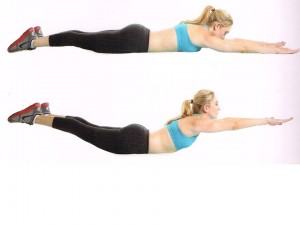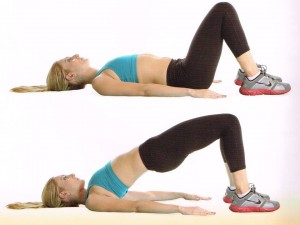Stronger core = Strong Body
If you already have not read our earlier blog on “What is core stability” I recommend you do so you understand the basics of what “core” is http://absolutehealing.com.au/wp/core-stability/
Our widespread dependence on artificial support, such as chair backings that shoulder the work of sitting up straight for us, has left many of us soft around the middle. Imagine all of those hours slouching, without challenging the core, until upon rising the back feels strained to the point where pain prevails. If you have a physical job, you are likely to benefit greatly from challenging your core.
Core Stability
Core-stabilising exercises help to support your core during motion. To stabilise is to both secure your spine and work your visible abdominal muscles. During the execution of a core-stabilising exercise, your spine should remain in a neutral position without any movement. Stability exercises focus on improving your core functionality over defining your abdominal musculature.
Core Strength
Core strengthening exercises work the core directly, building strength and endurance as well as muscle. These are the moves that can give you the “six pack” abs look, in which each segment of the rectus abdominis is highly defined.
Core strengthening exercises generally target the rectus abdominis, transversus abdominis and obliques. In the process, the muscles of the midsection become more compact.
BASIC CORE EXERCISE
Plank
The Plank is an isometric, or contracted, core-stabilizing exercise, designed to work your entire core. It is a reliable way to build endurance in your abs and back.
- Begin on an exercise mat on your hands and knees in facedown position.
- Plant your forearms on the floor, parallel to each other.
- Raise your knees off the floor and lengthen your legs until they are in line with your arms. Remain suspended in Plank for 30 seconds, building up to 2 minutes.
CORRECT:
- Keep your abdominal muscles tight.
- Keep your body in a straight line.
AVOID:
- Bridging too high, which can take stress off working muscles.
Hip Raise
Hip Raise really challenges your Core strength. Not only an abdominal and lower back exercise, but also targets your gluteal and hamstring muscles.
- Lie on your back with your legs bent, your feet flat on the floor, and your arms along your sides.
- Push through your heels while raising your pelvis until your torso is aligned with your thighs. Lower and then repeat, working up to 3 sets of 15.
CORRECT:
- Push through your heels, not your toes.
AVOID:
- Overextending your abdominal past your thighs in the raised position.
Reverse Crunch
 The Reverse Crunch is highly effective for isolating the lowest portion of the rectus abdominis, where most abdominal fat tends to be stored.
The Reverse Crunch is highly effective for isolating the lowest portion of the rectus abdominis, where most abdominal fat tends to be stored.
- Lie on your back with your arms at your sides and legs bent at 90-degree angle with your feet off the floor.
- Lift your buttocks a few inches off the ground as you bring your knees towards your chest. Lower in a controlled manner. Repeat, working up to 3 sets of 20 repetitions
CORRECT:
- Lift with your abdominals rather than your neck or back.
AVOID:
- Using excessive momentum
Superman
 Superman is great for targeting your entire core as well as your hip flexors and glutes. It’s also an effective exercise for your back strengthening.
Superman is great for targeting your entire core as well as your hip flexors and glutes. It’s also an effective exercise for your back strengthening.
- Lie facedown on your stomach with your arms and legs extended on the floor.
- Raise your arms and legs simultaneously squeezing your glutes at the top, and then lower. Work up to 3 sets of 15.
CORRECT:
- Raise your arms and legs as high as possible.
AVOID:
- Over stressing your neck.
Mike Manoukian

